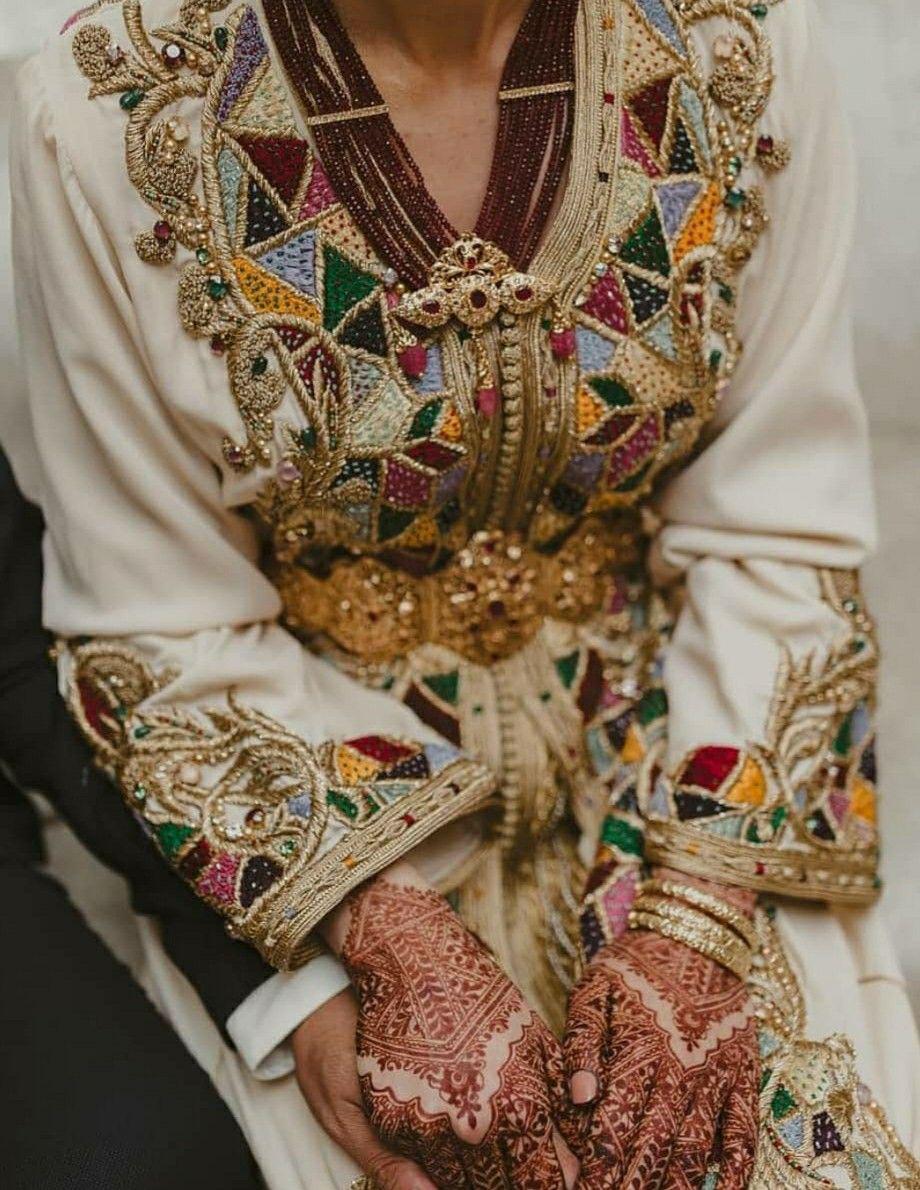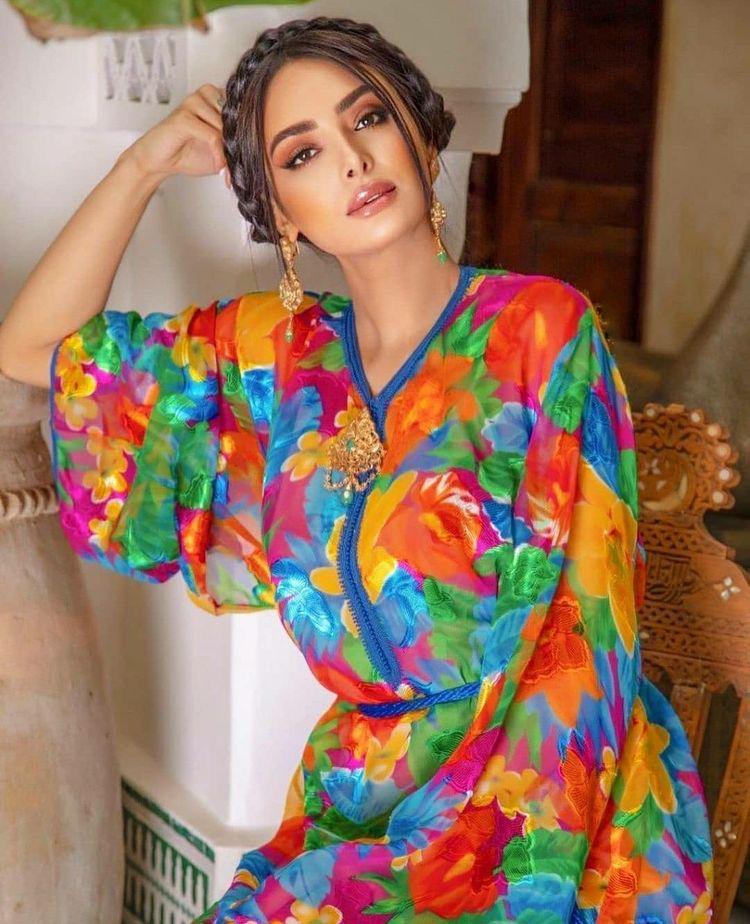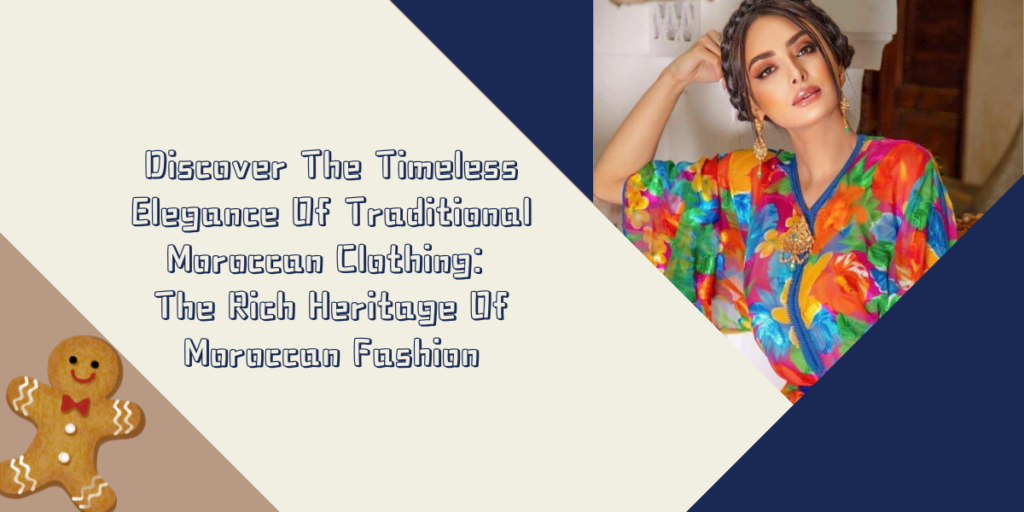Morocco, a North African country with a rich cultural heritage, is known for its vibrant colors, intricate designs, and exquisite craftsmanship. One of the most striking aspects of Moroccan culture is its traditional clothing, which has been passed down through generations and remains an essential part of the country’s identity. In this article, we will delve into the world of traditional Moroccan clothing, exploring the history, styles, and significance of these beautiful garments, and why they are still relevant in today’s fashion world.
The History Of Traditional Moroccan Clothing
The history of Moroccan clothing dates back thousands of years, with influences from various civilizations that have occupied the region, including the Berbers, Arabs, Romans, and French. Each of these cultures has left its mark on Moroccan fashion, resulting in a unique blend of styles and designs that are distinctively Moroccan.
The Berbers, the indigenous people of Morocco, have been weaving textiles and creating clothing for centuries. Their traditional garments, made from wool or cotton, are characterized by simple designs and earthy colors. Over time, as Arab and Islamic influences spread across the region, Moroccan clothing evolved to incorporate more intricate patterns, vibrant colors, and luxurious fabrics such as silk and velvet.
During the period of French colonization in the 20th century, Moroccan fashion was further influenced by European styles. However, despite these outside influences, traditional Moroccan clothing has remained true to its roots and continues to be a symbol of the country’s rich cultural heritage.
Styles Of Traditional Moroccan Clothing
There are several key styles of traditional Moroccan clothing, each with its own unique characteristics and significance. Some of the most popular styles include:
Djellaba: The Djellaba is a long, loose-fitting outer robe with full sleeves and a hood, worn by both men and women. It is typically made from wool or cotton and is designed to provide warmth and protection from the elements. The Djellaba is a versatile garment, worn for both casual and formal occasions, and is often adorned with intricate embroidery or patterns.
Kaftan: The Kaftan is a long, flowing gown worn by women, often made from luxurious fabrics such as silk or velvet. It is typically worn for special occasions and is characterized by its vibrant colors and elaborate patterns. The Kaftan is often worn with a wide belt, called a “mdamma,” which is adorned with jewels or embroidery.
Takchita: The Takchita is a two-piece dress worn by women for weddings and other formal events. It consists of a long, sleeveless dress called a “tahtiya” and a matching, long-sleeved over-dress called a “dfina.” The Takchita is often made from rich fabrics such as brocade or velvet and is adorned with intricate embroidery, beading, or sequins.
Gandoura: The Gandoura is a simple, sleeveless tunic worn by both men and women. It is typically made from cotton or linen and is worn for casual, everyday wear. The Gandoura is often worn over a long-sleeved shirt and is sometimes adorned with simple embroidery or patterns.
Jebba: The Jebba is a traditional men’s garment, similar in style to the Djellaba but without a hood. It is typically made from wool or cotton and is worn for formal occasions. The Jebba is often adorned with intricate embroidery or patterns and is worn with a wide belt called a “shashia.”

The Significance Of Traditional Moroccan Clothing
Traditional Moroccan clothing is not only a reflection of the country’s rich cultural heritage but also serves as a means of self-expression and identity. The vibrant colors, intricate patterns, and luxurious fabrics used in Moroccan garments are a testament to the craftsmanship and creativity of Moroccan artisans.
In addition to their aesthetic appeal, traditional Moroccan garments also serve practical purposes. The loose, flowing designs provide comfort and modesty, while the natural materials used in their construction offer protection from the harsh desert climate.
In recent years, traditional Moroccan clothing has experienced a resurgence in popularity, both within Morocco and on the international fashion stage. Designers from around the world have been inspired by the unique styles and craftsmanship of Moroccan garments, incorporating elements of traditional Moroccan fashion into their collections.
The advantages Of The Traditional Moroccan Clothing
Comfort: Traditional Moroccan clothing is designed to provide comfort in the country’s hot and arid climate. The loose-fitting garments allow for air circulation, helping to keep the body cool and comfortable.
Modesty: Moroccan clothing is modest and adheres to Islamic principles of dressing, which require both men and women to cover their bodies appropriately. This makes it suitable for religious and cultural events.
Cultural identity: Wearing traditional Moroccan clothing helps preserve and promote the country’s rich cultural heritage. It allows individuals to express their identity and pride in their culture.
Adaptability: Moroccan clothing is versatile and can be worn for various occasions, both formal and informal. The garments can be easily accessorized and customized to suit individual tastes and preferences.
Durability: Traditional Moroccan garments are made from high-quality materials and are designed to last. They are often handcrafted, ensuring attention to detail and durability.
Timelessness: Moroccan clothing has a timeless appeal, with designs that have remained relatively unchanged for centuries. This means that the garments do not go out of fashion and can be worn for many years.
Protection from the elements: The loose-fitting nature of Moroccan clothing provides protection from the sun’s harmful rays, as well as from wind and dust. This is particularly important in the country’s desert regions.
Economic benefits: The production and sale of traditional Moroccan clothing support local artisans and contribute to the country’s economy. This helps to preserve traditional craftsmanship and promote sustainable economic development.
Unique style: Moroccan clothing has a unique and distinctive style that sets it apart from other types of clothing. This makes it an attractive option for those looking to stand out and make a fashion statement.
Gender equality: Traditional Moroccan clothing is relatively similar for both men and women, promoting a sense of equality and unity between the sexes.

Conclusion
Traditional Moroccan clothing is a beautiful and timeless representation of the country’s rich cultural heritage. With its unique blend of styles, colors, and patterns, Moroccan fashion offers a distinctive and elegant alternative to mainstream fashion trends. As the world continues to embrace the beauty of Moroccan clothing, it is clear that these traditional garments will remain a cherished part of Morocco’s identity for generations to come.
FAQs
How to buy a good traditional Moroccan clothing?
To buy good traditional Moroccan clothing, follow these tips:
- Research: Familiarize yourself with the different types of traditional Moroccan garments, such as the djellaba, kaftan, takchita, and gandoura. Understand the differences between them and decide which type of clothing you are interested in purchasing.
- Choose the right fabric: Traditional Moroccan clothing is made from various fabrics, including cotton, silk, linen, and wool. Consider the climate and purpose of the clothing when choosing the fabric. For example, cotton and linen are suitable for hot climates, while wool is better for colder weather.
- Check the quality: Inspect the garment for quality in terms of stitching, embroidery, and fabric. Ensure that the seams are well-stitched and that the embroidery is intricate and well-done. High-quality garments are often handmade, so look for signs of craftsmanship.
- Determine the right size: Moroccan clothing is usually loose-fitting, but it is essential to choose the correct size for comfort and proper fit. If possible, try on the garment before purchasing or measure yourself and compare it to the seller’s size chart.
- Consider the occasion: Think about when and where you will wear the traditional Moroccan clothing. Some garments are more suitable for formal events, while others are appropriate for casual wear. Choose a garment that suits the occasion and your personal style.
What are the main types of traditional Moroccan clothing?
There are several types of traditional Moroccan clothing that reflect the country’s rich cultural heritage. Some of the most common types include:
Djellaba: A long, loose-fitting robe with a hood, typically worn by both men and women. It is made from various materials, such as cotton, wool, or silk, and comes in various colors and patterns.
Caftan: A long, elegant dress worn by women, often reserved for special occasions or celebrations. Caftans can be made from luxurious fabrics like silk, velvet, or brocade and are often adorned with intricate embroidery and embellishments.
Takchita: A two-piece dress worn by women, consisting of a caftan-like garment and a matching overdress. It is typically worn for weddings and other formal events and is often made from high-quality fabrics and decorated with elaborate embroidery, beads, or sequins.
Tarboosh (also known as Fez): A traditional hat made from red felt, with a flat top and a tassel. It is typically worn by men and is considered a symbol of Moroccan culture and identity.
What is the significance of traditional Moroccan clothing?
Traditional Moroccan clothing represents the country’s rich cultural heritage, influenced by various civilizations that have left their mark on Moroccan history, such as the Berbers, Arabs, Andalusians, and French. These garments are not only a reflection of Morocco’s diverse cultural influences but also serve as a symbol of national identity and pride. Wearing traditional clothing is a way for Moroccans to express their connection to their roots and preserve their unique cultural traditions.
Are traditional Moroccan clothes still worn today?
Yes, traditional Moroccan clothing is still worn today, especially during special occasions, religious festivals, and cultural events. While many Moroccans wear modern Western-style clothing in their day-to-day lives, traditional garments like the djellaba, caftan, and takchita continue to hold a special place in Moroccan culture. Many people still wear these traditional clothes during important events, such as weddings, Eid celebrations, or family gatherings, as a way to honor their heritage and maintain a connection to their cultural roots.
Where can I buy traditional Moroccan clothing?
Traditional Moroccan clothing can be purchased in various places, such as local markets, specialized boutiques, and online stores. Some of the best places to find authentic Moroccan garments are in the bustling souks (markets) of cities like Marrakech, Fes, and Casablanca. Here, you can find a wide range of traditional clothing, from simple, everyday djellabas to elaborate, hand-embroidered caftans and takchitas. Additionally, there are numerous online retailers that specialize in Moroccan clothing, offering a convenient way to shop for traditional garments from the comfort of your own home.
